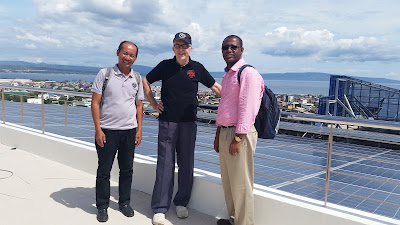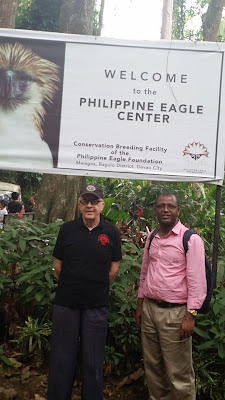Today is my last day in Philippines. In general my scientific mission in this country was a success; two my AMBER instruments are now successfully deployed and are online, pushing data back to Boston.
Before I close my story about my trip to Philippines, I just want to say a few words about the country. The Republic of the Philippines (political official name), is a sovereign island country in Southeast Asia located in the western Pacific Ocean. It consists of about
7,500
islands that are categorized broadly under three main geographical
divisions: Luzon, Visayas, and Mindanao. The capital city of the Philippines is Manila, the most populous city. The traffic in Manila is a mess, that is why the government coded all private vehicles; meaning a private vehicle with a specific pate number ending will be off the road one business day per week. For example, if your plate number ends with '1', then your car will not be on the road every Monday. The population of Philippines is more than 100 million people, and that placed the country the seventh-most populated country in Asia and the 12th most populated country in the world. An additional 12 million Filipinos also live overseas, comprising one of the world's largest diasporas.

In terms of colonialism, Philippines has been under colony by the Spanish empire for 375 years and by Americans for about 45 years. The arrival of the famous Spanish explorer, Ferdinand Magellan, in Homonhon, Eastern Samar in 1521 marked the beginning of Spanish colonization. In 1543, Spanish explorer Ruy López de Villalobos named the archipelago (the people who were living there)
Las Islas Filipinas in honor of Philip II of Spain. The Spanish occupation continue until the Philippine Revolution, which was led by a secret anti-colonial organization known as
Katipunan, that began in August 1896. The Philippine revolutionaries, led by Emilio Aguinaldo, declared independence from Spain on June 12, 1898. However, as part of the deal to end the Spanish-American war, Spain ceded the Philippines islands to the United States for $20 million in the Treaty of Paris on December 10, 1898. On the other hand the first Philippine republic objected to the terms of the Treaty of Paris under which the United States took possession of the Philippines from Spain, in other word, the Philippines got brand new colonizing power. The Filipino did not accept that and the fighting between United States and the Philippine Republic
forces erupted on February 4, 1899; and on June 2, 1899, the First Philippine Republic officially declared war against the United States.
The war officially ended on July 4, 1902, with a victory for the United States. Then after, aside from the period of Japanese occupation, the United States retained sovereignty over the islands until after World War II,
when the United States of America recognized the independence of the Philippines on July 4, 1946 through the Treaty of Manila. The date was chosen because it corresponds to the American Independence Day, which was also recognized as Independence day in the Philippines until May 12, 1962, when President Diosdado Macapagal issued Presidential Proclamation, shifting it to June 12, the date of Emilio Aguinaldo's proclamation.
Since its full independence in 1946,
the Philippines has often had a tumultuous experience with
democracy, which includes the overthrow of a dictatorship by a nonviolent revolution. The people have been enjoying the genius democracy that include changing their leaders by elections not by civil wars. Philippines has a constitutions of presidential system, in which the President functions as both head of state and head of government and is the commander-in-chief of the armed forces. The president is elected by popular vote for six-year limited term. During the time of my visit there was hot campaign for the next presidential election which is set to take place in May 2016. Although Filipino and English are official language, the Philippine islands have 19 recognized regional languages. Because of the extended Spanish occupation, Catholic is now the dominant religion in Philippines.
Presidential election campaign
The Philippine economy is the 39th largest in the world, with an estimated 2016 total gross domestic product (nominal) of $369.188
billion and per-capita of $3,568.
Primary exports include semiconductors and electronic products, transport equipment, garments, copper products, petroleum products, coconut oil, and fruits. Major trading partners include the United States, Japan, China,
Singapore, South Korea, the Netherlands, Hong Kong, Germany, Taiwan, and
Thailand. Its unit of currency is the Philippine peso (₱ or PHP); at the time of my visit $1 = 47.7 PHP).
In my view, although it a young nation since its independence, the country has gone a tremendous achievement towards building stable democracy and institutions. As African origin, I'm so jealous of all these; because when I looked at many of African countries, which are much older than Philippines, struggling to even have fair and free election, I ask myself 'when do African leaders stop thinking for themselves but for the future of their country?'.
Heading back home!
Anyway, I'm now back home safely without any flight delay. Stay tune for another upcoming trip for another scientific mission.


























































